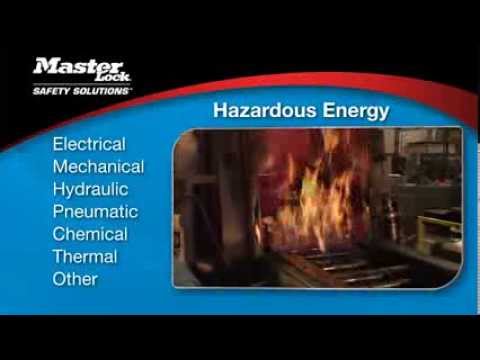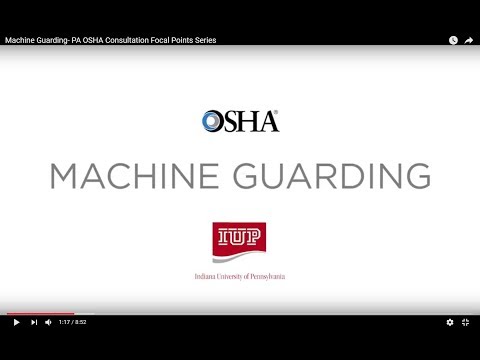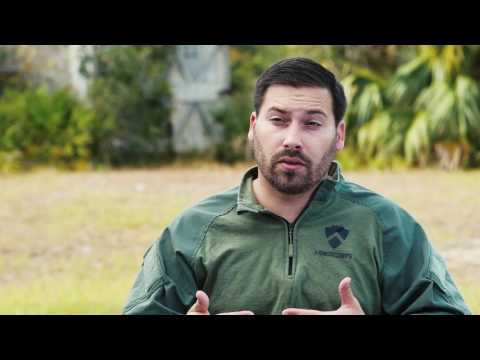Top Tips for Managing OSHA’s 2018 Top 10 Violations
The 2018 OSHA top 10 list is out. See what’s new and top of mind for the regulator and enforcer of safety in the U.S.
The 2018 OSHA top 10 list is out. See what’s new and top of mind for the regulator and enforcer of safety in the U.S.
In an effort to highlight common safety issues and raise awareness about steps that can be taken to prevent accidents and injuries, here are the top tips that can help you boost your OSHA compliance and avoid being part of its Top 10 violations list.
Every year, the Occupational Safety and Health Administration compiles a “Top 10 list” of the most egregious compliance violations based on safety area and announces them at the National Safety Council Congress & Expo. This year is no different.
What’s new in OSHA’s Top 10 Violations for 2018? The majority of the list remains in the same safety areas—including fall protection, lockout/tagout, respirators, ladders and scaffolding all holding their respective spots. But fall protection training moved up one spot from No. 9 in 2017 to No. 8 this year. Conversely, machine guarding dropped from the No. 8 spot down to No. 9. And the newest area to crack the list at No. 10 is eye and face protection—which took over from last year’s electrical wiring methods.
“The OSHA Top 10 list calls out areas that require increased vigilance to ensure everyone goes home safely each day,” said Deborah A.P. Hersman, president and CEO of NSC, in a press release.
Here, we’ve listed the top and most common hazards that apply to the general manufacturing industry for the fiscal year 2018 (Oct. 1, 2017, through Sept. 30, 2018), along with safety tips and online resources—including videos—that offer some guidance. See the sidebar for the full list and number of violations for each area.
What it is: Violations to the general requirements of the fall protection standard (29 CFR 1926.501) topped the OSHA Top 10 violations list of 2018 list of most-cited violations, while violations of the fall protection training requirements (29 CFR 1926.503) came in eighth place. In the first case, employers were most commonly cited for failing to provide fall protection when needed in a variety of situations, including on roofs or on walking/working surfaces that were more than 6 feet above a lower level or that had an unprotected side or edge. In the second, employers were cited for failing to provide adequate training.
Safety tip: Any employee who might be exposed to fall hazards should receive training in recognizing those hazards and the procedures to follow to minimize them, including the use of personal fall arrest systems.
Watch: FallTech, a manufacturer of personal fall arrest systems, created a video on fall protection that focuses on inspecting and putting on body harnesses. Other videos include instructions for inspecting self-retracting devices and inspecting fall protection lanyards.

For help with fall protection, be sure to explore Honeywell Miller ‘s “Guide to Personal Fall Arrest Systems.”
And browse a full slate of fall protection equipment right here.
What it is: OSHA’s hazard communications standard (29 CFR 1910.1200) requires facilities to clearly label workplace chemical hazards and to provide information on the chemicals and their dangers to employees. Top citations were for: failure to develop, implement and maintain a hazard communication program; failure to maintain workplace copies of safety data sheets; and failing to provide employees with information and training on the hazardous chemicals in the workplace.
Safety tip: Keeping up-to-date safety data sheets for the chemicals in your facility not only meets OSHA requirements but also helps keep your employees safe.
Watch: A 15-minute video from Cardi Construction Corp. describes the different aspects of OSHA’s hazardous communications standard, as well as walking through the different sections of a safety data sheet.
What it is: Frequent violations to OSHA’s scaffolding requirements (29 CFR 1926.451) are failure to provide adequate protection to employees on scaffolds, providing incorrect access to scaffolds, having incorrect decking on scaffolds, and failing to protect employees with either personal fall arrest systems or guardrail systems.
Safety tip: Regular inspections are key to ensuring OSHA scaffolding requirements
are met and are set up safely for employees and contractors.
Watch: In 2010, the State Compensation Insurance Fund created two video training sessions for scaffolding safety. Part 1 is available on YouTube here, while part 2 is available here. The videos cover safe use and inspection of scaffolds, fall hazards, using designation egress areas, rolling scaffolds and the use of personal protective equipment.
What it is: OSHA standard 29 CFR 1910.134 describes when and how employers need to provide workers with respiratory protection and other protections needed for those exposed to hazardous dusts, gases, fogs, etc. Among the most common citations were failing to provide required medical evaluations, not having a written respiratory protection program, and failing to perform fit-testing on employees using respirators.
Safety tip: Every workplace presents different hazards and has different respirator needs. Develop a respiratory protection program to address the needs specific to your workplace.
Watch: OSHA provides a brief overview of respiratory hazards in general industry and respiratory protection requirements in a 10-minute video on its website. The video can be used as part of employee training, but employers must also provide worksite-specific training. Additional OSHA videos cover respirator types, fit testing, maintenance and repairs and medical evaluations.

Frustrated by all the respirator options? Don’t fear. Read our guide: “PPE Selection: Find the Right Type of Respirator.”
What it is: OSHA regulation 29 CFR 1910.147 covers the control of potentially hazardous energy. Frequent violations are for failure to develop, document and use procedures, failure to conduct periodic inspections of the procedure, failure to develop an energy control program, failure to provide training to employees, and failure to notify affected employees when lockout or tagout devices are applied or removed.
Safety tip: Make sure employees understand the importance of a lockout/tagout procedure and know how to implement the right safety practices.
Watch this: Lockout/tagout procedures will vary from facility to facility, but an 11-minute safety video from Master Lock provides an overview of why the procedures are important and how they can be implemented. The video covers when lockout/tagout is needed, who is considered an affected employee, steps to safely apply lockout, and more.
Looking for something specific? Browse this wide array of lockout/tagout options.

What it is: Violations to OSHA’s recently updated ladder rules (29 CFR 1926.1053) often involve easily avoidable mistakes like employees using a ladder on uneven surfaces or for tasks it wasn’t designed for, or employees standing on the top of a stepladder (which should not be used as a step).
Safety tip: Don’t take ladders for granted. Just because they’re a relatively simple piece of equipment doesn’t mean they’re without hazards.
Try this: The American Ladder Institute offers a library of free training resources on its website. Modules cover stepladders, single and extension ladders, mobile ladders and articulated ladders.
See a full spectrum of rolling, wall mounted, platform and escape ladders right here.
What it is: Machine guards, as described in OSHA’s 29 CFR 1910.212, protect machine operators from pinch points, exposed blades, rotating parts, flying chips and sparks. The most common violations involve failure to provide guards, or failing to install guards correctly.
Safety tip: Conducting a safety assessment can help identify machines that are missing guards or have improperly installed machine guards.
Watch this: A video from the PA/OSHA Consultation Program at Indiana University of Pennsylvania highlights the hazards associated with working on machinery, the role of machine guards and the requirements for specific types of guards.

What it is: OSHA’s 29 CFR 1926.102 rule, which is a construction standard, requires that an employer must “ensure that each affected employee uses appropriate eye or face protection when exposed to eye or face hazards from flying particles, molten metal, liquid chemicals, acids or caustic liquids, chemical gases or vapors, or potentially injurious light radiation.”
Safety tip: Remember, side protection is also part of the rule when there are flying objects like those found in a metalworking shop. In addition, working conditions, comfort, fit and prescription lenses can play a big role in the kind of PPE you choose. Take note: You may need to wear glasses with a face shield over them to protect light and debris simultaneously.
Watch this: Learn about the different types of glasses used in the general industry standard for eye and face protection from Atlantic Training here. See a little bit of a different take here from 3M that shows the importance of eye protection in a military and police training environment.

Help yourself find the products your employees need for your specific working conditions with our interactive product selector designed for eye and face protection.
How to Get Proactive with OSHA
Facilities looking to take a proactive approach in meeting the OSHA standards that show up in the Top 10 list have a variety of resources to turn to:
OSHA’s On-Site Consultation program. The no-cost service, primarily for smaller businesses, offers confidential on-site visits to help facilities identify hazards. No citations or fines are issued, and businesses are given a one-year exemption from routine OSHA inspections.
The OSHA Safe & Sound Campaign urges companies to commit to developing comprehensive health and safety programs.
OSHA recently updated the Guidelines for Safety and Health Programs, and the new Recommended Practices guide is designed to be used in a variety of small- and medium-sized businesses. The accompanying website includes tools, case studies and other resources.
Here is the full list of violations and their respective rankings based on the number of violations:
1. Fall Protection – General Requirements (1926.501): 7,270 violations
2. Hazard Communication (1910.1200): 4,552 violations
3. Scaffolding (1926.451): 3,336 violations
4. Respiratory Protection (1910.134): 3,118 violations
5. Lockout/Tagout (1910.147): 2,944 violations
6. Ladders (1926.1053): 2,812 violations
7. Powered Industrial Trucks (1910.178): 2,294 violations
8. Fall Protection – Training Requirements (1926.503): 1,982 violations
9. Machine Guarding (1910.212): 1,972 violations
10. Eye and Face Protection (1926.102): 1,536 violations



